This blog post is part of the Install vRealize Automation 8 using vRLCM series and focuses on the install of vRealize Automation (vRA).
vRA8 simplifies the application stack versus vRA7 by doing away with the Windows IaaS components in place of a self contained appliance. While this is true it does add it's own complexity. vIDM (VMware Identity Manager) is embedded in vRA 7 appliance, which when vRA is clustered automatically clusters vIDM. In vRA8 it is a separate appliance. There is no point clustering vRA8 appliances and leaving vIDM as a single appliance so this should also be clustered. To do so is where the extra complication comes in. Multiple vIDM appliances must be configured with a load balancer in front.
I started off installing vRLCM 8.0 but part way through upgraded it to vRLCM 8.1. You may notice some differences in the screenshots but the process remains the same for both versions. Check out the vRLCM 8.0 release notes, especially the known issues which details the removal of a file otherwise services may not start post reboot. Check out the vRLCM 8.1 release notes too. One of the benefits of vRLCM 8.1 over 8.0 is the ability to change the vRLCM certificate in the GUI. Despite VMware's vRLCM 8.1 docs detailing the old method.
vRA Install
Estimated Time: 45 minutes
This post provides the step by step instructions needed to install vRA.
- Load Balancer
Firstly setup your load balancer of choice according to the documentation:
vRealize Automation 8.1 Load Balancing
Initially make sure only the first node is enabled. Most importantly disable service/healthcheck monitoring until installation is complete. - Create Environment
Navigate to Lifecycle Operations > Create Environment to kick off the vRA install. Provide an environment name, email address, select the Datacenter and setup a Default password.
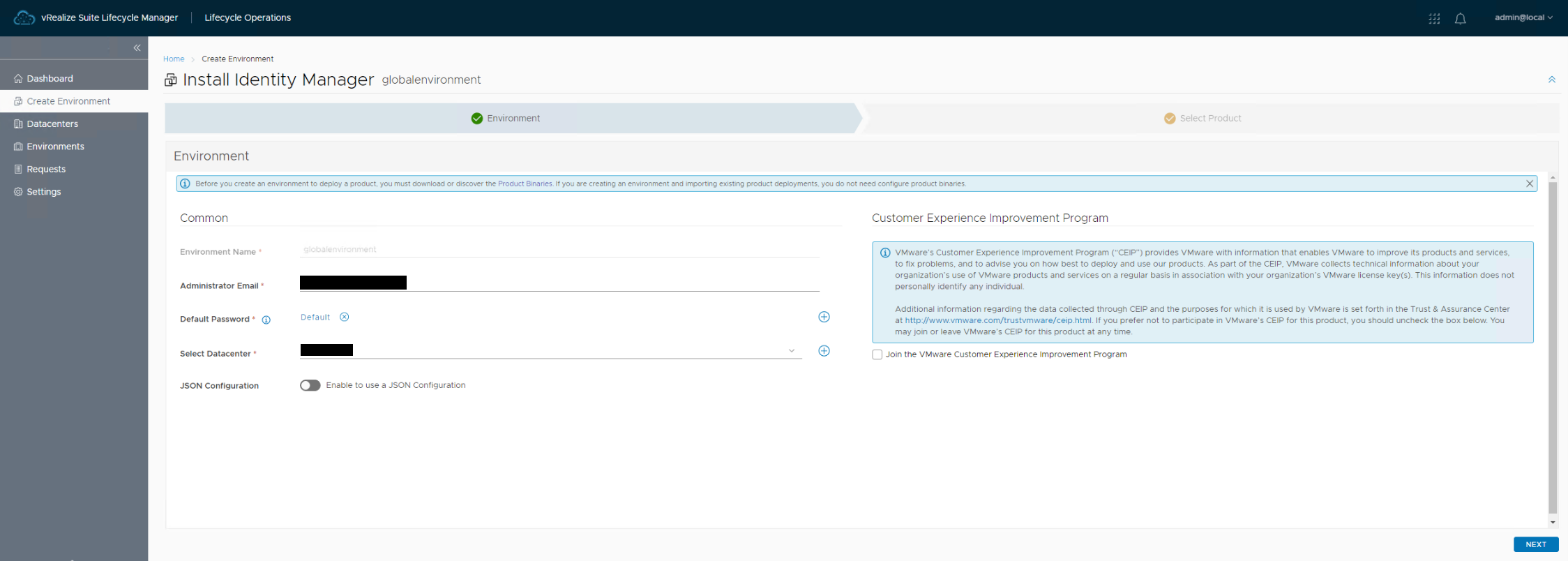
- Select Product
Select “New Install”, version and “Cluster” as deployment type for vRealize Automation.
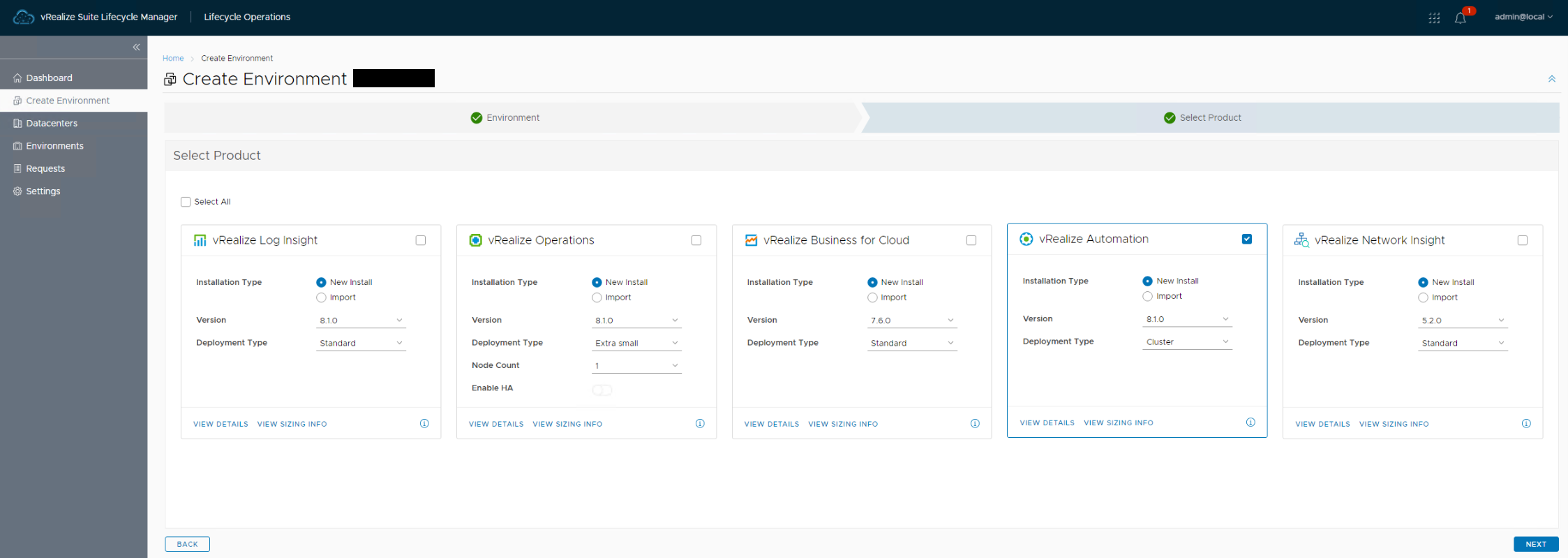
- EULA
After that accept the EULA so you can continue.
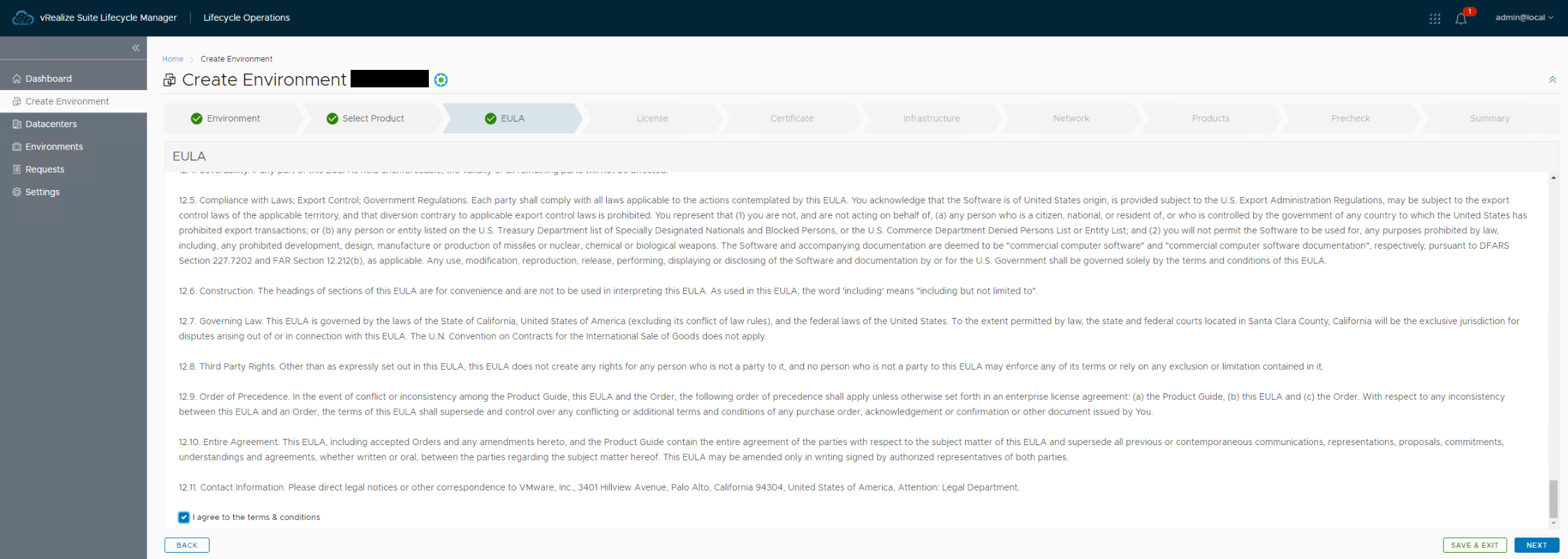
- License
Add and validate a license for vRealize Automation.
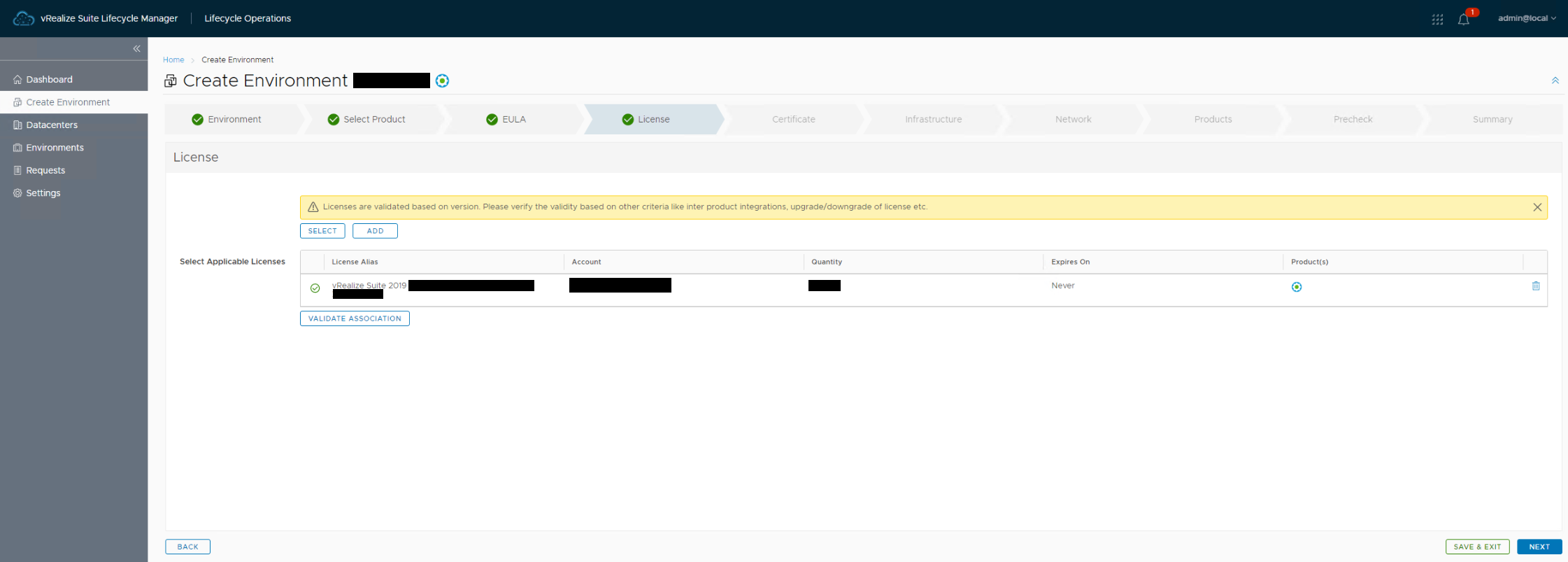
- Certificate
Select the certificate generated for vRA from the available list.
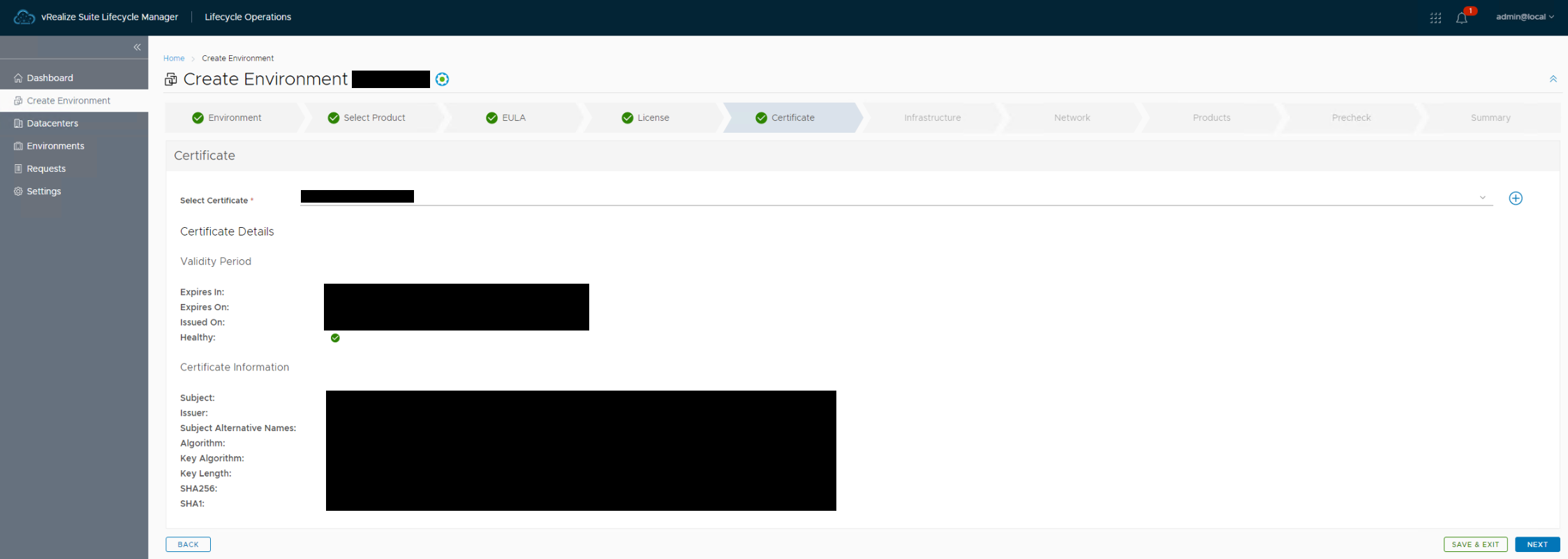
- Infrastructure
Select required values for each option, vCenter for instance. This is so vCenter can deploy the vRA VMs.
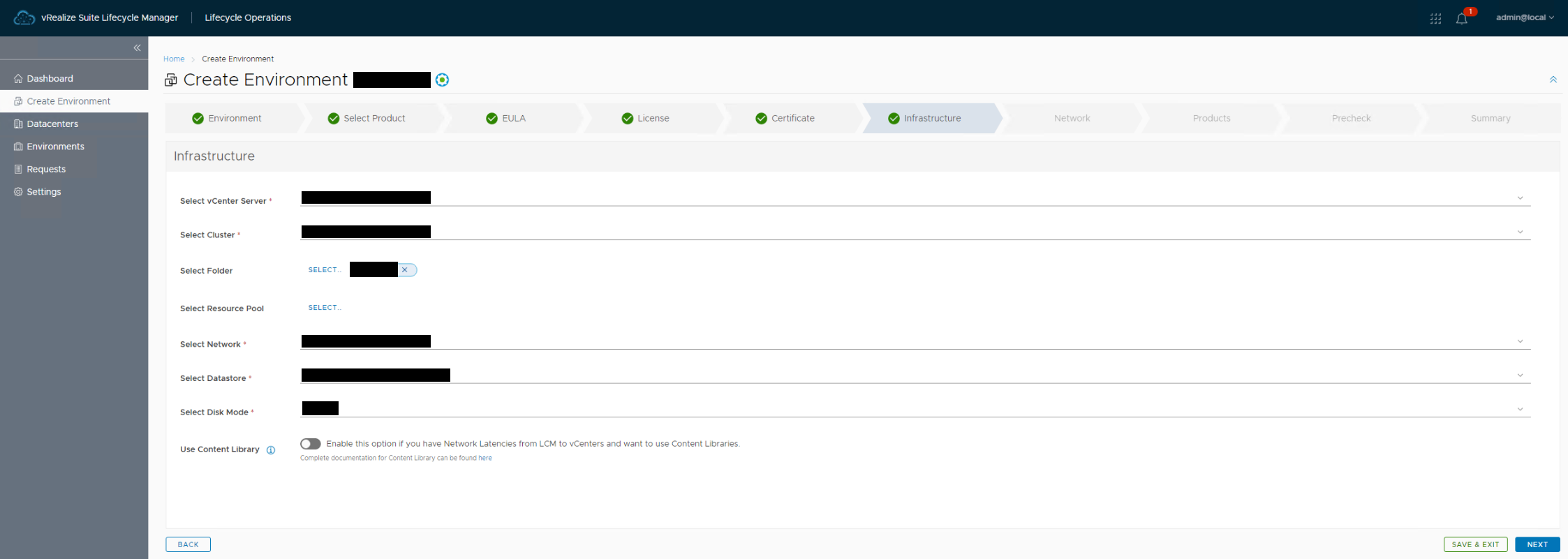
- Network
Provide required values for each option, Default Gateway for instance.
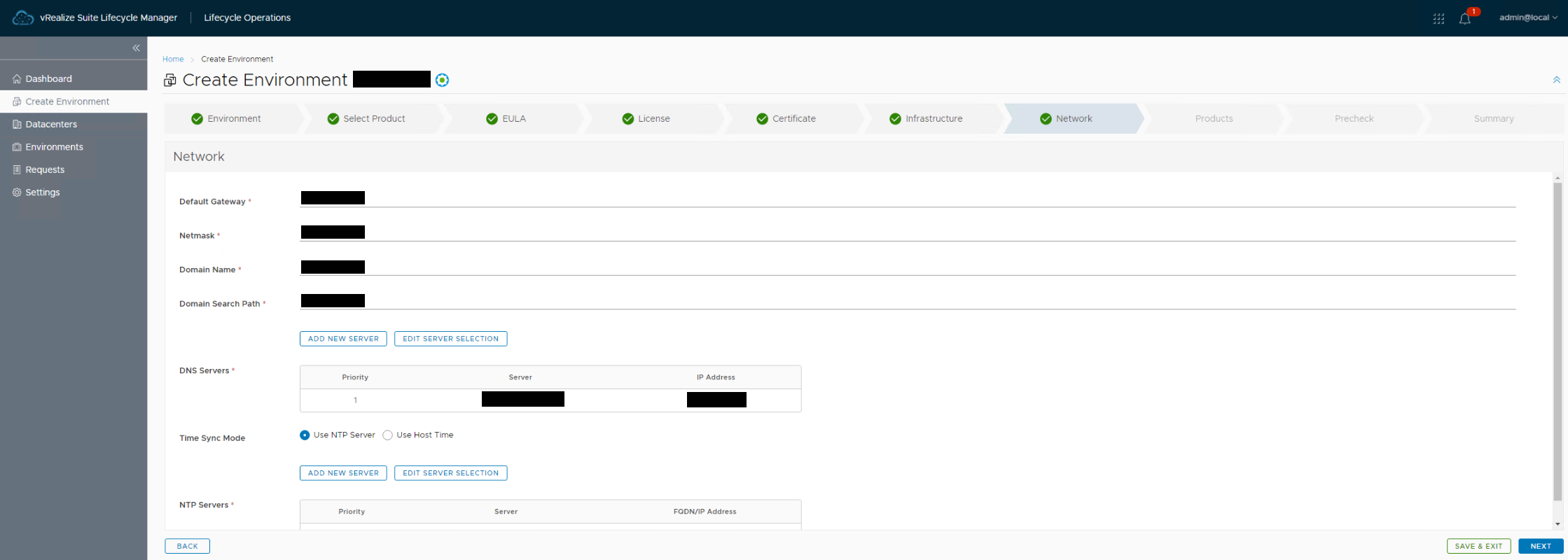
- Products
Provide required values for each option, Cluster FQDN for instance. This section details the hostname and IP information for each node along with the cluster configuration.
Most importantly “SSL terminated at load-balancer” should not be ticked.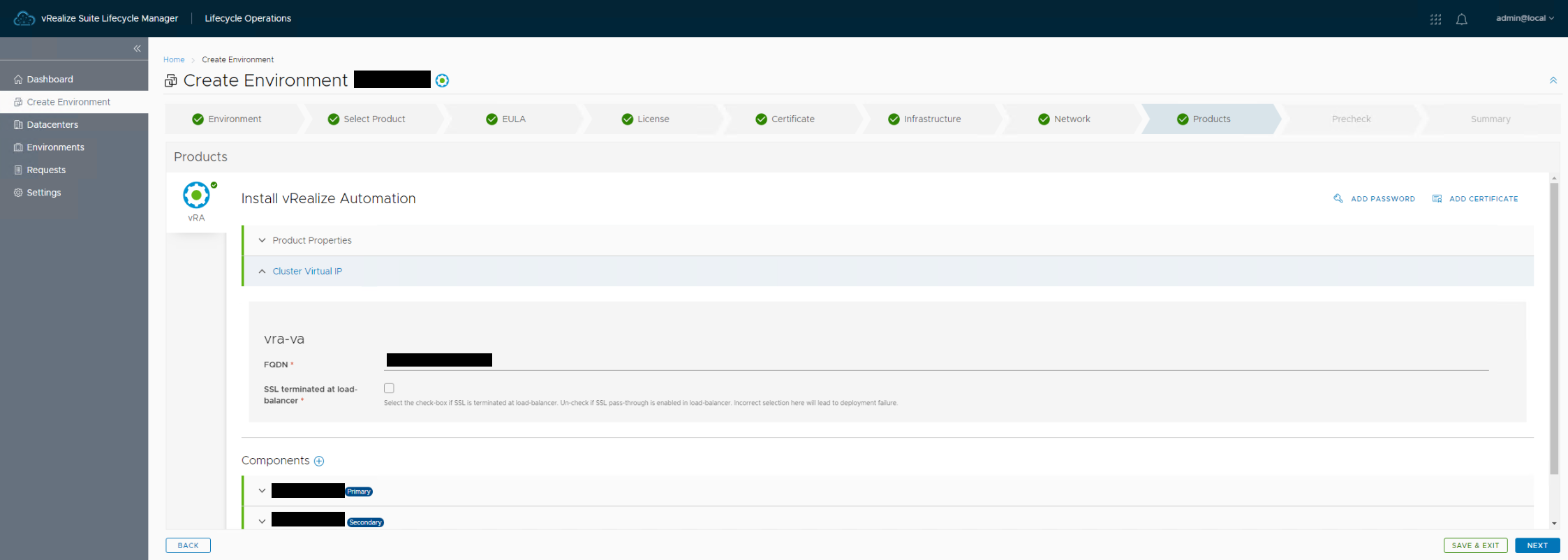
- Run Precheck
Run a check of all settings and selected values.
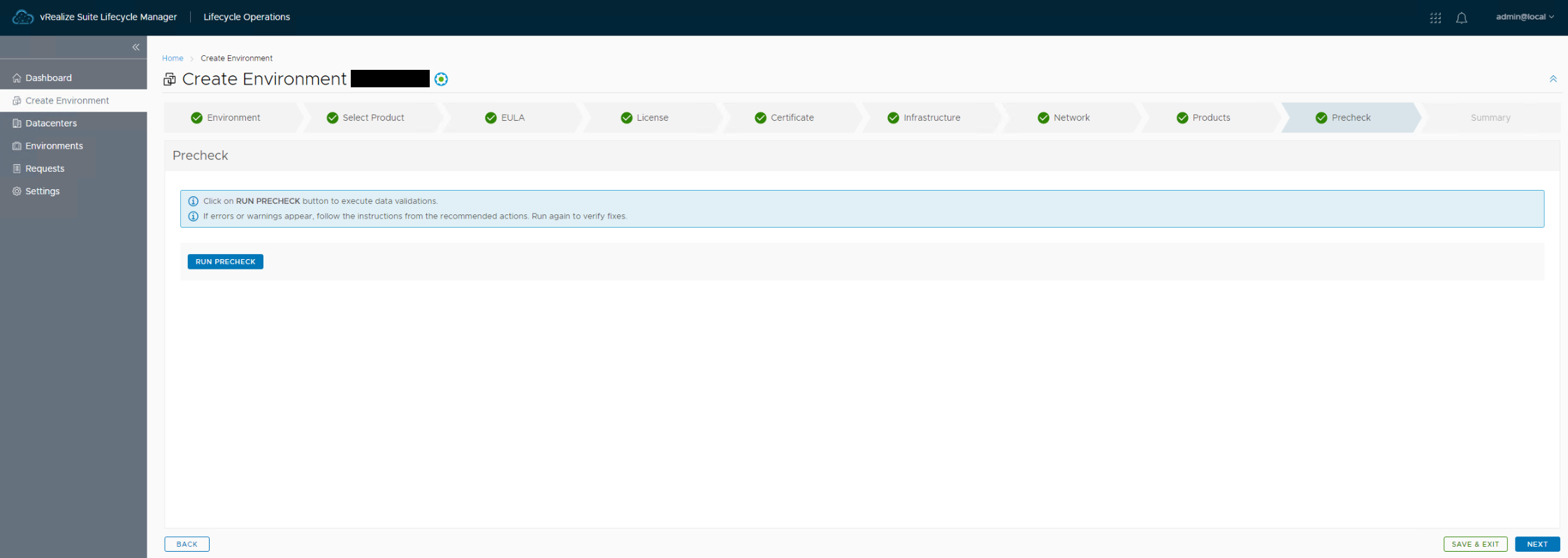
- Precheck Success
Everything should certainly come back successful.
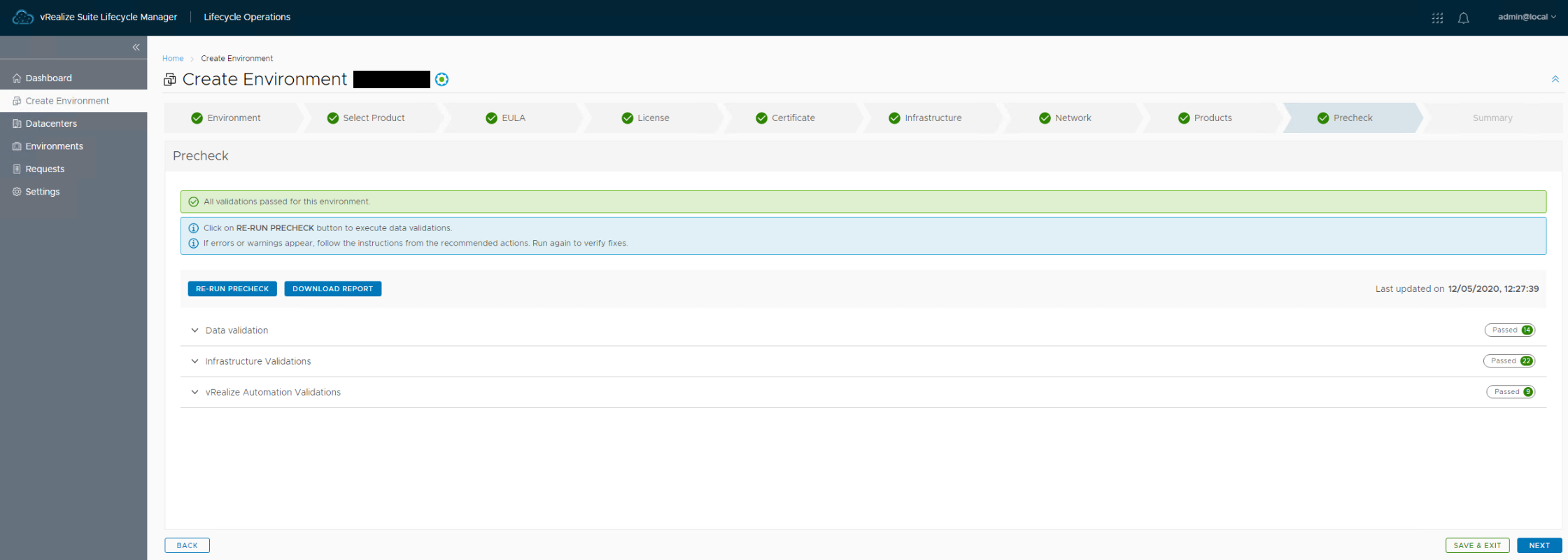
- Summary
Finally check all details are correct and then proceed with install.
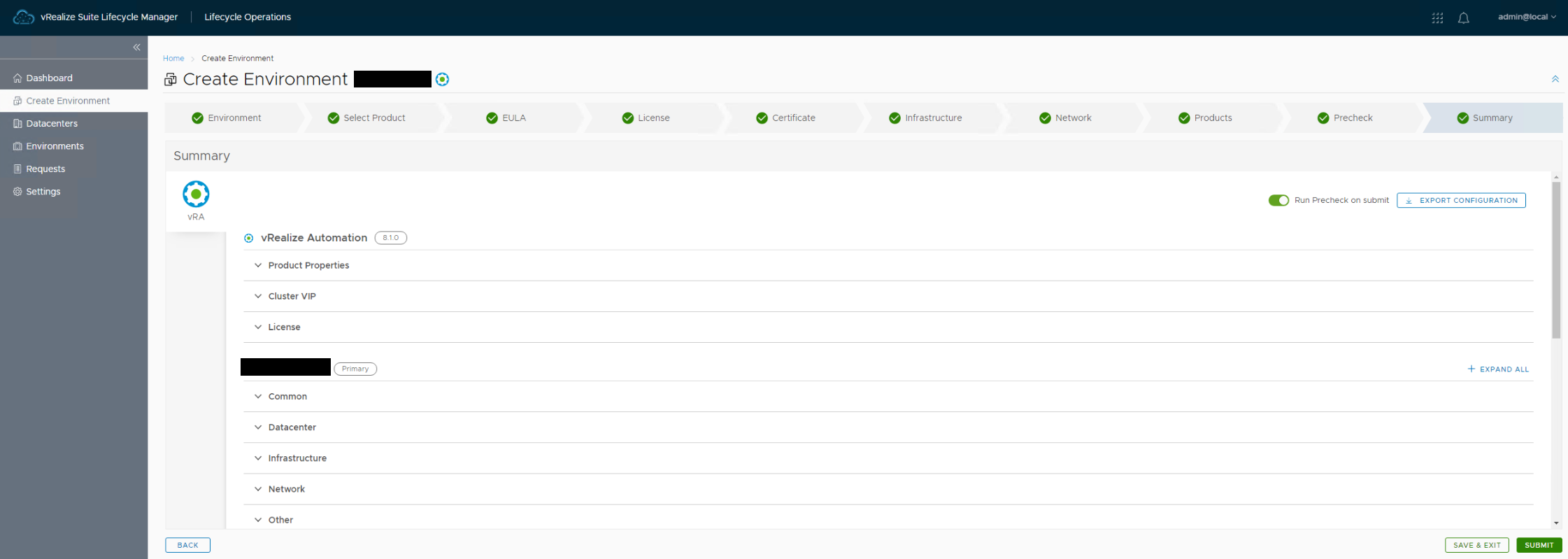
- Complete
In conclusion you will see vRA installed under your named environment.
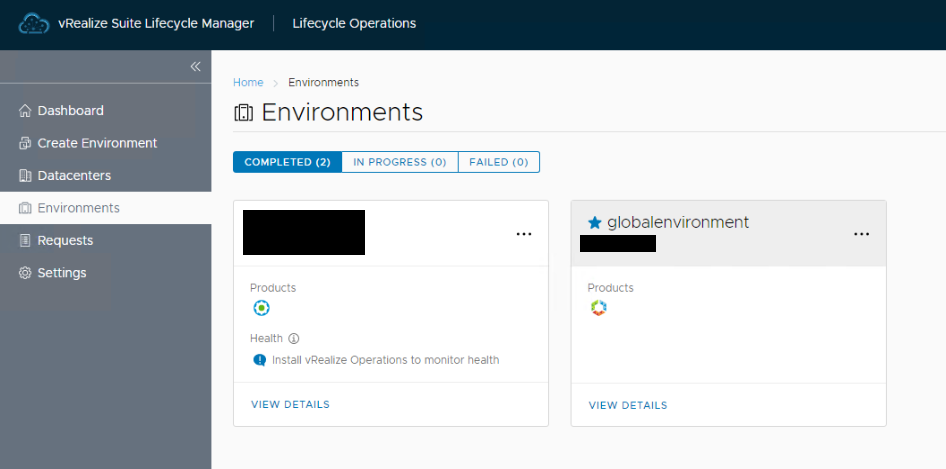
- Login to vRA
Access the vRA URL:
https://{Cluster FQDN}/
Login using the “Default Configuration Admin” username and password you specified during the vIDM installation.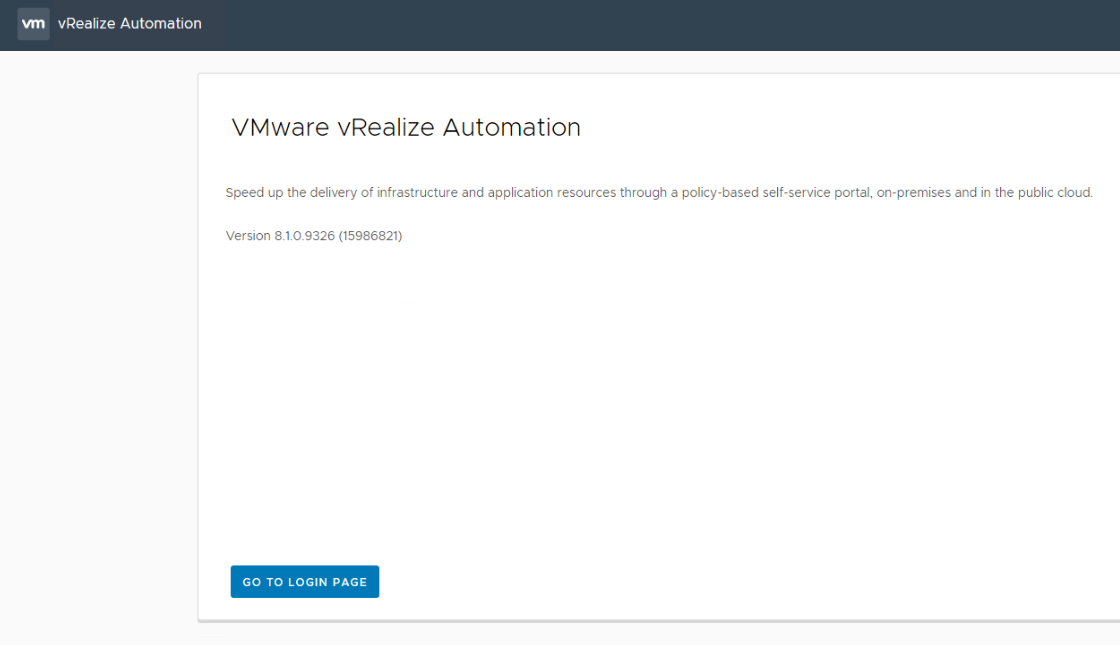
Hi,
Thanks … team will be doing this soon…
For environment with 3 tier – app/web/db network segments, how and where should all these be placed? should the db in a separate segment from the other 2/1 components?
— will be having vrlcm, vIDM, Vra… i am still very new to all these…
Thanks
Gary